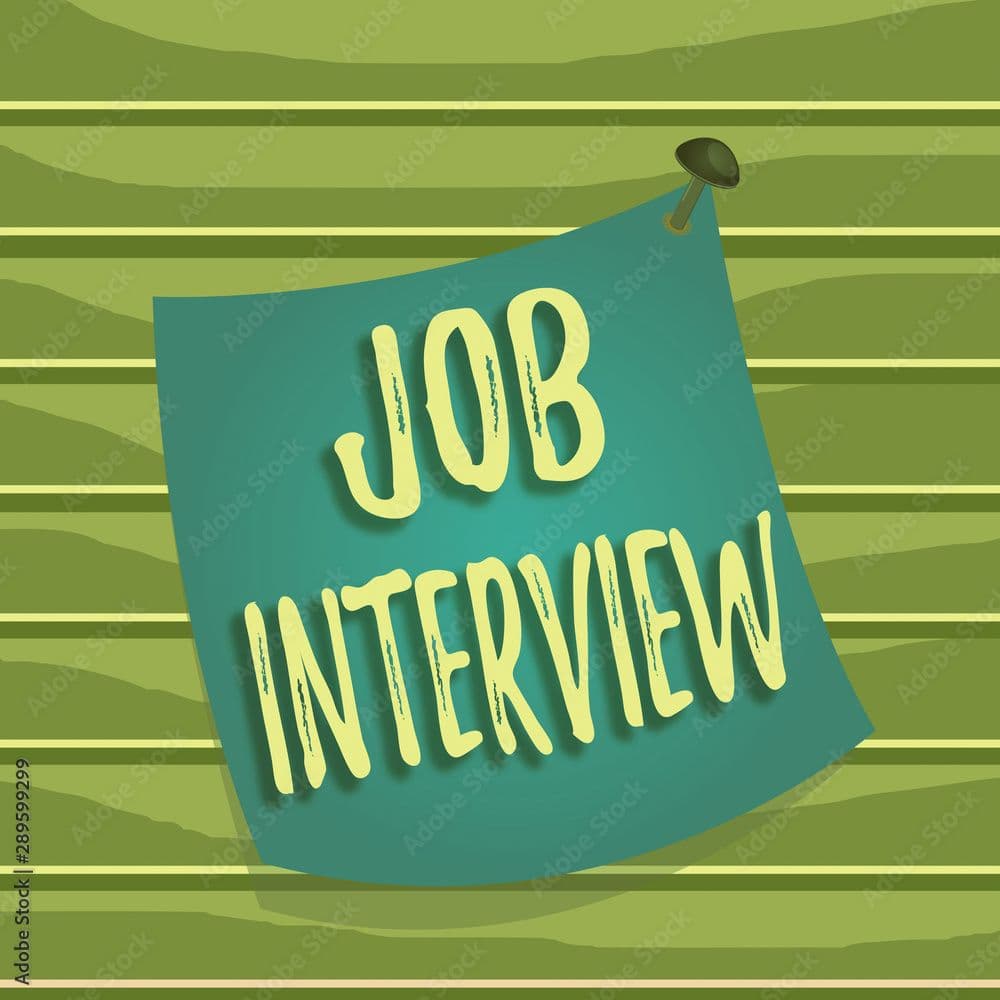Let’s Get Your Resume to the Top of the Stack! (Resumes Part 1)
A frustration that I hear from alot of job seekers is, “Ryan, I’ve applied to all of these companies, but I haven’t heard back from any of them! What am I doing wrong?”
That’s a great question…and the answer to that question is as SPECIFIC TO YOU as it can get.
It’s like me walking into a room full of single people and them wanting me to tell them exactly what they are doing “wrong” when it comes to dating.
Well, Ned probably never follows up after the first date and as a result most of the people he takes out think that he wasn’t that into them. Allison grew up in a family that never hugged so as a result, she’s super awkward when it comes to physical touch/flirting. The answers vary WIDELY depending on who is asking!
You can see why it is so hard to give specific advice to such a general question. Especially because what one person is doing wrong, another person is doing perfectly well – and they are both getting the same results.
One person may really suck at writing cover letters, another person probably doesn’t even realise they are suppsed to send a cover letter each time they submit a resume! Someone else may just be totally unaware of how to beat the ATS; another person has no idea what an *ATS is.
(*ATS stands for applicant tracking system, and unless you understand how these pieces of software work in today’s modern world, you are unlikely to get in for many job interviews.)
So clearly, the best thing I can do is give THE BEST general advice possible, and then if you are really struggling, you can bring up this question in the Refer Facebook Group where we can all help you--that’s what that community is for!
Now here is one thing I have to tell you beforehand… my mom was a school teacher. She tried so hard to get me to spell and use correct grammar, but as an adult this is still something I could care less about. I don’t think it is a true predictor of success in life--AT ALL! But when it comes to applying for jobs, holy freakin crap, it is one of THE MOST important things you absolutely (no buts about it) need to be paying attention to.
It is worth using spell check. It is intelligent to have someone else go over what you write with a fine tooth comb. If you need to pay for Grammarly, then give in.
Your cover letter and resume are your tickets into the doors of opportunity, and if you don’t put a lot of care into these documents, why would someone want to pay you top dollar for your time if you are the kind of person that overlooks spelling their company name right?
Here are 10 of the biggest mistakes I see people make when applying for jobs:
Mistake #1 You applied but didn’t follow up
Mistake #2 You sound generic on paper
Mistake #3 You didn’t research the company before applying
Mistake #4 You didn’t use keywords and strong verbs
Mistake #5 Your resume isn’t formatted correctly
Mistake #6 You didn’t match your resume to the job description
Mistake #7 You haven’t quantified your contributions to your current and previous employers and highlighted the ones that are most relevant to the position you’re applying for
Mistake #8 You are only applying for jobs that you meet 100% of the requirements
Mistake #9 You are “overqualified” and didn’t give enough explanation about why you are applying for the job
Mistake #10 You didn’t clean up the things you should have cleaned up! We are talking social media, pictures, email address, public record, personal website, etc!
We are going to cover the first 5 of these today and the other 5 next week!
Mistake #1 You applied but didn’t follow up
You should follow up on EVERY resume you send off. In the job description, if they give an email address for you to contact with questions, send them a simple and polite message asking if they received your application materials:
Dear ______________,
I recently applied for _____________ position at your company and just wanted to double check that you received all of my application materials.
Appreciatively,
“Your Name”
Now that sounds very formal (obviously mix it up with the word choice based on the company you are applying at and whether or not you have previously met the person you're emailing).
Understand that they may be receiving a significant number of applicants for not just that position, but other positions at their company (meaning, give them realistically 2-3 business days, 4-5 business days max, to get back to your “I’m following up on if you got my resume” email).
If you don’t hear from them, I’d give them a call. Call their main office secretary or better yet, their department secretary. Also, if your effort to get in touch with the contact info they provided isn’t working so great, I’m a huge fan of just emailing the hiring manager directly – the secret is keep the correspondence SHORT and SWEET.
So let’s say they reply back: “Yes, we got your info. Thanks for applying; we’ll be in touch!” And then 2 weeks go by and you’ve heard nothing…
Reach out again and say,
Hi ___________,
This is _________________. I imagine you have been receiving many applicants for the ___________ position. If so, I’m not surprised; It sounds like an incredible opportunity!
I just wanted to quickly follow up on the status of my application and whether or not the position has been filled.
Thanks so much, and have an incredible day!
"Your Name”
Mistake #2 You sound generic on paper
Okay, so I used the “dating” comparison at the beginning of this blog post, but we are going to apply it again here.
So I’ve got my share of single friends out there doing the dating thing. Honestly, I would say most of them have the right intention–they are looking for somebody solid who has the potential to make some kind of more permanent commitment and would want to build a future together.
But the funny part about it is, some of these friends are super quick to draw a conclusion about a person based on something as simple (and stupid, if you ask me!) as the three sentneces that person wrote about themselves on some dating app.
Here’s the thing, having a conversation with someone is different from reading what they wrote on a piece of paper (or digital profile, resume, etc.)
BUT, with that said, if you sound TOTALLY BORING when you write about yourself (your accomplishments, etc.) (and by boring, I mean you sound like everybody else; you don’t sound different or unique) people are NOT going to want to move forward with you – I’m talking about giving you the opportunity to interview (or in my friends case, get a date–which is a lot like an interview ha!).
If you are thinking, “Ryan, I’m that BORING person on paper! OH NO! How do I overcome this?”
Well, take the advice I give below in mistake #3 about doing some research about the company. You will actually get a feel for the “flavor” of their business (what their culture is like, the lingo they use on their website, blog, and social media).
It is 100% my best advice that you integrate this “flavor” into the way you say things on your cover letter and resume. THEN… get some feedback! Ask a friend that is good with their words to take a look at your cover letter and resume and make suggestions of other ways to change up your wording (adding a little extra spice).
Did you ever watch that guy Emeril Lagasse on the Food Network? Part of the reason so many people tuned into his cooking show was because he was so animated/lively. He would say things like, “Let’s kick it up a notch!” And he meant it. (Want to see the antithesis of boring, go watch that guy!)
You need to have this kind of approach to your written word – KICK IT UP A NOTCH! And if the written word doesn’t come that naturally to you, seriously approach a friend or someone that it does. Get their suggestions about the way you say things.
Mistake #3 You didn’t research the company before applying
In the world of job seeking and applications, there is something I like to call “snippering.” What I mean by that is taking a laser focused approach to applying at the companies you are most interested in working for.
Most job seekers are “carpet bombs.” They see good jobs that potentially sound interesting so they carpet bomb them: they send out 20 of the same reesume to 20 different companies and sit and wait to hear back.
While this approach may have worked “okay” for people a few years back, in the modern and competitive world of trying to find your next exciting career opportunity, you actually need to be more focused in your approach of applying. [The next couple tips/mistakes I go over (specifically mistakes #4-6) will cover this in more depth.]
This is what I mean by snippering: you research the companies and find out what their company culture is, what their goals are , what’s the overarching mission they are trying to accomplish and HOW are they going about doing it?
Then you take what you learn and think, HOW can I show that I want to be a part of that in the way I describe myself, my aspirations, and accomplishments, on my resume and cover letter?
I talk about this in a Youtube video I did a few years ago. Everything I say about applying for jobs and carpet bombing vs. snippering still applies today! Check it out: Increase Your Chances of Landing Your Dream Job.
Mistake #4 You aren’t using keywords and strong verbs
Back to that concept of the ATS (the applicant tracking system). Those things can be brutal on matching up applicants for the job, scoring applicants, and ranking them as a “fit” for the position.
Some HR people will literally type in the job title from the job ad and hit “search” so that they only have to go over the applicants that have previously done that same job title.
Or, they will just “search” the “keywords” and if you don’t have enough of them, you’re automatically thrown out as a potential candidate.
So what do I mean by keywords?
When you read the job description you want to circle all of the skills and experience they are asking for. You also want to circle all of the terms or phrases that appear MULTIPLE times throughout the job description.
Now when you write your resume, it better dang well include those words and phrases throughout. Not in a phony way, but because you actually know about and have experience doing those things.
If you are taking classes but don’t have a degree, include the classes. If you are working on a certification but haven’t finished it yet, include it and just write “in progress” or the date you know you’ll have it by.
You want to show them that you know what you claim to know.
Verbs
Your verbiage is super important. Did you notice how I italicized “verb” – yeah, SUPER IMPORTANT. Remember English class, or better yet those commercials on t.v. a few years back that taught us “Verb, it’s what you do”? [*]
So if a verb is what you do, what did you do for your previous company? And how well does it match with the job description?
If you really want to stand out, you need to use the exact verbs the company uses to describe what qualifications they want to see in a new hire. Past-tense action verbs are best.
If a job description asks for team building and leadership experience, you will want to use words and phrases such as “team built,” “led,” ““oversaw,” ”collaborated,” and so on.
The ATS looks for the correct past-tense action verbs to match the right applicant with their company’s job description – so get ahead of it.
Mistake #5 Your resume isn’t formatted correctly (including too long)
If you don’t have at LEAST seven years of professional experience for the job that you are applying for, your resume shouldn’t be more than one page. And even then, you should be careful about sending multi-page documents, unless it is standard practice for that industry (such as jobs in academia).
AND the worst thing you can do is stuff that single page resume till it’s exploding with text!
I took a class back in the day where we were taught about advertising, and the instructor said that even in print advertising, a company pays the same amount of money for an ad even if most of it is just white space. In art, this is called “negative space” or “air space.” It’s literally the breathing room for a person's eyes to feel like they can move around easily and visually navigate something.
You want to apply this to your resume and cover letter. If you are taking up the whole freakin piece of paper with text, no one is going to want to read that thing. We just look at it over here at HR and our eyes start bleeding.
Smarter way to approach this: pick a standard and legible font (fonts with serifs are the easiest for our eyes to naturally transition from word to word) so I’d stick with the basics like Georgia, Times New Roman, Garamond. If you are all about being hip and want to use a san serif font,pick something normal like Helvetica, Arial, or Calibri.
Don’t go smaller than around 11 point font size, but recognize that some fonts look really small in the first place. 12 is pretty universally acceptable.
Unless you know the template is ATS safe, steer clear of using templates. A lot of ATS software can’t read them so it will automatically throw your resume out. Yikes! Best thing to do, use a normal word processor and create your cover letter and resume then export them as PDF file formats– because PDF is standard.
Also, a couple extra things here, your heading (the place where you put your name and contact info) you want to use the same heading on both your resume and cover letter. Keeping elements uniform helps differentiate you from other candidates in people’s minds.
Whatever language you are submitting your documents in will determine the “visual hierarchy” (or where a person’s eyes naturally go to on a page). English is a language that reads top-to-bottom, left-to-right. Because of this, our eyes naturally start at the top and left on a page.
Why is this important to know? Because here is a pretty normal protocol: ATS scans your application materials first. You pass that first checkpoint, then an HR personnel takes a look, and if you are lucky, finally a hiring manager.
The further up that chain you get (in general, not as a rule) the less time they spend looking at your resume – meaning every second counts. So… put your most important information where it is most likely to get seen by the people you want to see it – top areas and left areas. This is another reason to be weary of templates, they have all kinds of crazy formatting suggestions. Personally, I love being able to see someone's key skills first – so either at the top or the left areas of the page.
To recap, next week we are going over mistakes #6-10! Start apply the advice about mistakes #1-5:
- You are going to want to follow up on EVERY position you apply for.
- Try to bring your personal “flavor” and especially the company’s “flavor” into your application materials.
- Learn about ATS’s so that you can better follow the “rules” of how to make sure your application (resume + cover letter + other application materials) makes it past the checkpoints and to the top of the stack!
You’ve got this!!

Ryan Kay
Helping people get the career of their dreams!
Related articles

How to Get an Interview
Do you apply and rarely get called back for an interview? Try applying this advice, and watch it work!
